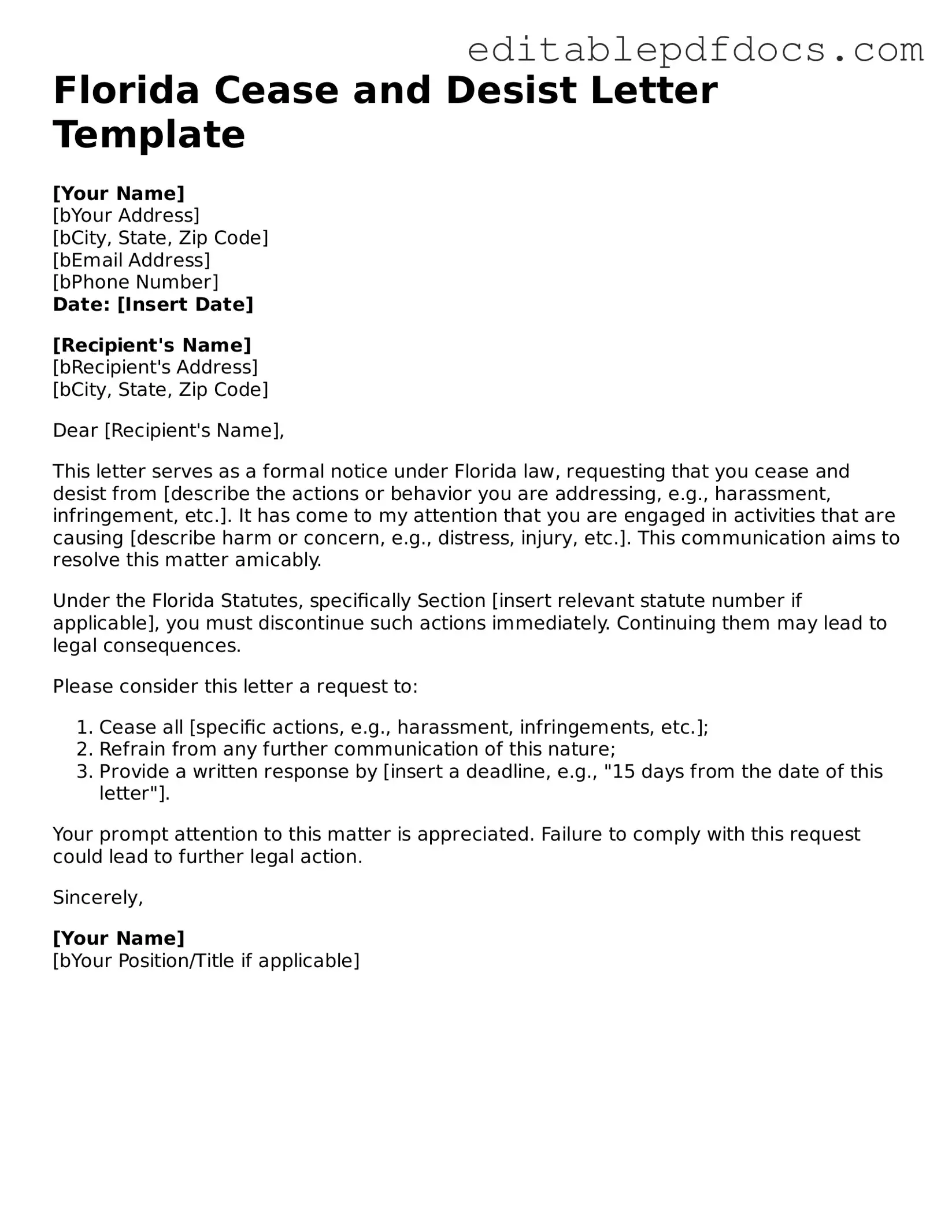Filling out a Florida Cease and Desist Letter form can be a straightforward process, but many people make common mistakes that can undermine their efforts. Understanding these pitfalls can save time and ensure that your letter is effective. Here are eight mistakes to watch out for.
One frequent error is failing to clearly identify the parties involved. It’s essential to include your name and address, as well as the name and address of the person or entity you are addressing. Without this basic information, the recipient may not understand who is sending the letter, leading to confusion and potential disputes.
Another common mistake is not being specific about the behavior you want to stop. Vague language can weaken your case. Clearly outline the actions or behaviors that you find objectionable. This clarity helps the recipient understand exactly what they need to cease.
Many individuals also overlook the importance of providing evidence or examples of the behavior in question. Including specific instances or evidence can strengthen your claims. It demonstrates that you are serious and have a valid reason for requesting the cessation of certain actions.
Another misstep is failing to state the legal basis for your request. While you don’t need to be a lawyer to write a cease and desist letter, mentioning any relevant laws or regulations can add weight to your argument. It shows that you are informed and serious about your request.
Some people make the mistake of using overly aggressive or hostile language. While it’s important to convey the seriousness of the situation, maintaining a professional tone is crucial. A calm and respectful approach is more likely to result in a positive response.
Additionally, neglecting to include a deadline for compliance can weaken your letter. Providing a specific timeframe for the recipient to cease their actions gives them a clear expectation. It also shows that you are serious about resolving the issue promptly.
Another common error is not keeping a copy of the letter for your records. Documentation is key in any legal matter. Keeping a copy allows you to refer back to it if the situation escalates, and it provides proof that you made an effort to resolve the issue amicably.
Finally, many people forget to consider sending the letter via certified mail. This method provides proof of delivery, which can be invaluable if the situation escalates to legal action. It ensures that there is a record that the recipient received your letter.
By avoiding these common mistakes, you can enhance the effectiveness of your Florida Cease and Desist Letter. A well-prepared letter can help you resolve disputes more efficiently and protect your rights.
